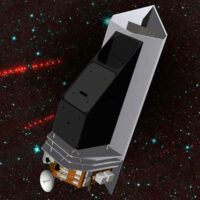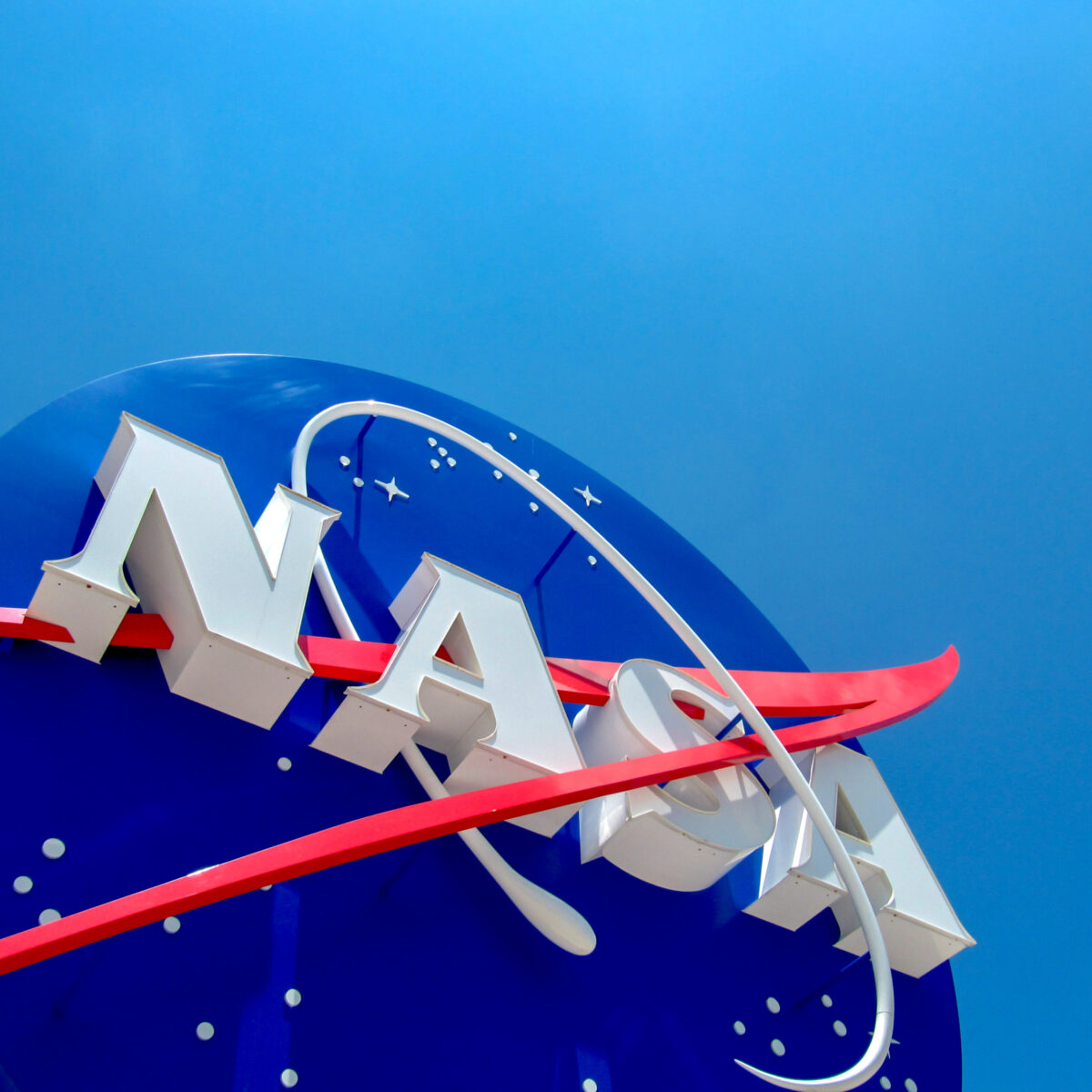NASA will receive $25.4 billion in fiscal year (FY) 2023. This is roughly $1.3 billion more than NASA received in 2022, an increase of 5.6%. High inflation and growing labor costs will mitigate the purchasing power of this increase.
The President's FY 2023 budget request for NASA proposed nearly $26 billion, an 8% increase. Though the Senate released a budget matching that topline, the House of Representatives' legislation provided significantly less. The final compromise legislation fell $554 million short of both the Senate and the President's spending proposals.
The shortfall was not spread evenly. Congress supported proposed budget growth for NASA's human and scientific exploration programs, which are the primary interest of The Planetary Society:
- Artemis funding grew by $613 million, primarily for the lunar Human Landing System to support a second provider and to continue building a second mobile launch tower for the SLS rocket;
- Mars Sample Return received $822 million as requested, growing by nearly $200 million;
- the Planetary Science Division grew by $80M from 2022, with an additional $40 million above the Presidential request.
NEO Surveyor, which was singled out for extensive cuts by NASA in 2023, ultimately received $50 million more than requested, for a total of $90 million. While important for the project, it was significantly below the $174 million required to retain its original 2026 launch date. In early December 2022, NASA formally committed to launching the spacecraft in 2028.
Congress reversed no mission cancellations proposed by the administration: the SOFIA airborne observatory, NASA's contribution to the Mars Ice-Mapper mission, and the Earth Science project GeoCarb were all successfully ended. Congress did provide SOFIA with $30 million to support close-out activities.
Though NASA received less funding than requested in 2023, it still grew compared to the previous year. NASA has now enjoyed an unbroken decade-long run of annual budget growth, from $17.7 billion in FY 2014 to $25.4 billion in FY 2023.
| 2022 Enacted | 2023 PBR | House CJS | Senate CJS | Final | |
|---|---|---|---|---|---|
| NASA | $24,041 | $25,974 | $25,446 | $25,974 | $25,384 |
| Science | $7,614 | $7,988 | $7,905 | $8,046 | $7,795 |
| Planetary Science | $3,120 | $3,160 | $3,200 | $3,210 | $3,200 |
| NEO Surveyor | $143.2 | $39.9 | $94.9 | $80 | $90 |
| Earth Science | $2,065 | $2,412 | $2,335 | $2,346 | $2,195 |
| Astrophysics | $1,394 | $1,556 | $1,525 | $1,561 | $1,510 |
| Roman Space Telescope | $501.6 | $482.2 | $482.2 | $482.2 | $482.2 |
| Heliophysics | $778 | $760.2 | $760.2 | $828.4 | $805 |
| Biological & Physical Science | $82.5 | $100.4 | $85 | $100.4 | $85 |
| Exploration | $6,792 | $7,478 | $7,324 | $7,548 | $7,469 |
| Orion Crew Vehicle | $1,407 | $1,339 | $1,339 | $1,339 | $1,339 |
| SLS | $2,600 | $2,580 | $2,600 | $2,600 | $2,600 |
| Lunar Gateway | not specified | $779.2 | not specified | $799.2 | not specified |
| Human Landing System | $1,195 | $1,486 | $1,486 | $1,486 | $1,486 |
| Space Technology | $1,100 | $1,438 | $1,250 | $1,264 | $1,200 |
| Space Operations | $4,041 | $4,266 | $4,256 | $4,294 | $4,250 |
| Aeronautics | $881 | $972 | $950 | $972 | $935 |
| STEM Engagement | $137 | $150.1 | $150.1 | $150.1 | $143.5 |
| Safety, Security, & Mission Services | $3,021 | $3,209 | $3,139 | $3,229 | $3,130 |
| Construction and Environmental Compliance | $410 | $424 | $424 | $424 | $414.3* |
| NASA Inspector General | $45.3 | $48.4 | $48.4 | $48.4 | $47.6 |
All values are in millions of dollars. Directorate/top-level line-items are in boldface, divisions and major projects are in standard formatting; sub-programs are in italics. All major directorates are listed but not all sub-divisions or projects are included here. *Includes $367M drawn from a another congressional appropriations account.
Explore this data. View historical NASA budget data, including breakdowns by fiscal year, and comparisons to total U.S. spending and GDP, on this Google Spreadsheet.
The President's Budget Request
The President's Budget Request for NASA was released on March 28th, 2022. Highlights of the proposal included:
- $822 million for Mars Sample Return, which would represent roughly a quarter of all spending by NASA's Planetary Science Division. The project will now launch in 2028 instead of 2026.
- A $291 million increase for the Human Landing System program to support a second provider beyond SpaceX.
- Nearly $8 billion for NASA science programs, the largest amount in the agency's history.
- Returns JWST into the Astrophysics division, marking the end of its long, troubled, but ultimately successful development phase and the start of operations. The budget proposes an additional $10 million per year for science operations.
- An increase of nearly $400 million for Earth Science, to support the Earth System Observatory project.
Proposed Cuts in FY 2023
- A $143 million cut to the asteroid-hunting NEO Surveyor planetary defense mission, delaying the launch to no earlier than 2028. This was done to "support other priorities in planetary science", with specific blame placed on cost growth for Mars Sample Return and Europa Clipper. Ground-based NEO observations are unaffected.
- The SOFIA flying observatory. NASA stated that "SOFIA's annual operations budget is one of the most expensive operating missions in the Astrophysics Division" and that "The Astro2020 Decadal Survey found that the science productivity of the mission is not on par with other large science missions."
- "the budget terminates NASA financial support for the Mars Ice Mapper, which is still in pre-formulation with roles being discussed with international partners. NASA had not planned on making hardware contributions."
Note: all quotes are from NASA's FY 2023 president's budget request and related documents.
| 2022 Enacted | 2023 PBR | % Change | |
|---|---|---|---|
| NASA | $24,041 | $25,974 | +8% |
| Science | $7,614 | $7,988 | +5% |
| Planetary Science | $3,120 | $3,160 | +1% |
| Earth Science | $2,065 | $2,411 | +17% |
| Astrophysics | $1,394 | $1,556 | +12% |
| Heliophysics | $778 | $760 | -2% |
| Biological & Physical Science | $79.1 | $100 | +22% |
| Exploration | $6,792 | $7,478 | +10% |
| Orion Crew Vehicle | $1,407 | $1,339 | -5% |
| SLS | $2,600 | $2,580 | -0.8% |
| Human Landing System | $1,195 | $1,486 | +24% |
| Space/Exploration Technology | $1,100 | $1,438 | +31% |
| Space Operations | $4,041 | $4,266 | +6% |
| ↳ Commercial LEO Development | $101 | $224 | +120% |
| Aeronautics | $881 | $972 | +10% |
| STEM Engagement | $137 | $150 | +10% |
| Safety, Security, & Mission Services | $3,021 | $3,209 | +6% |
| Construction and Environmental Compliance | $410 | $424 | +3% |
| NASA Inspector General | $45.3 | $48.4 | +7% |
All values are in millions of dollars. Directorate/top-level line-items are in boldface, divisions and major projects are in standard formatting; sub-programs are in italics. All major directorates are listed. Only selected divisions and projects are included. For further detail see the FY 2023 NASA Budget Request.
President's Budget Request Source Documents
Congressional Activity
Congress passed consolidated appropriations for all U.S. federal agencies, including NASA, on Friday, December 23rd, 2022.
House CJS Source Documents
- H.R. 8256: HAC Commerce, Justice, Science Appropriations Legislation - NASA Section
- H.R. 8256: HAC Commerce, Justice, Science Appropriations Committee Report - NASA Section
Senate CJS Source Documents
- SAC Commerce, Justice, Science Appropriations Legislation - NASA Section
- SAC Commerce, Justice, Science Appropriations Committee Report - NASA Section
H.R. 2617 - Consolidated Appropriations Act, 2023
A joint-letter in support of NEO Surveyor
The National Space Society and The Planetary Society jointly argue for funding the asteroid-hunting NEO Surveyor mission.
NASA's FY 2023 Budget Stays the Course
The Biden Administration proposed $26 billion for NASA — we break down the potential impacts to human exploration and planetary science.
Space Policy Resources
Read and explore space policy analysis, recommendations, and datasets provided by The Planetary Society.


 Explore Worlds
Explore Worlds Find Life
Find Life Defend Earth
Defend Earth




